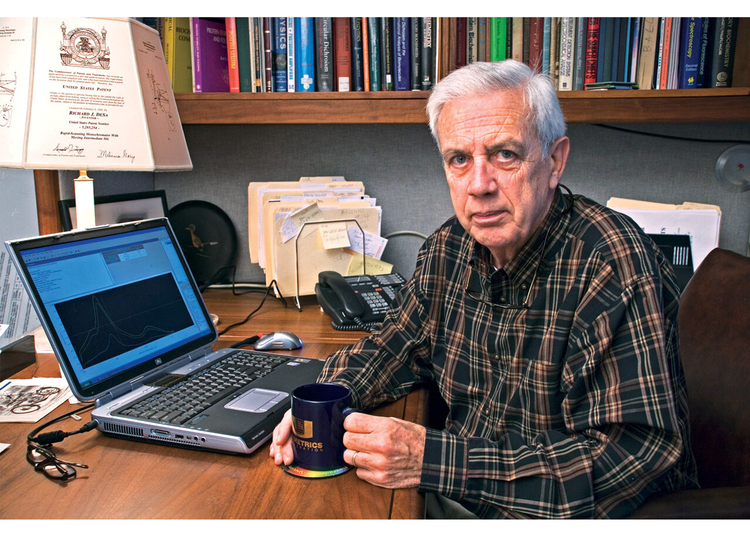Not known Incorrect Statements About Circularly Polarized Luminescence
Wiki Article
Circularly Polarized Luminescence - An Overview
Table of ContentsFascination About Circular DichroismSome Known Factual Statements About Circular Dichroism The smart Trick of Circularly Polarized Luminescence That Nobody is Talking AboutThe Greatest Guide To Circular DichroismSome Known Factual Statements About Spectrophotometers

Spectrophotometry is a tool that hinges on the quantitative analysis of molecules depending on how much light is absorbed by colored compounds.
The Best Guide To Uv/vis/nir
A spectrophotometer is frequently used for the measurement of transmittance or reflectance of options, transparent or nontransparent solids, such as sleek glass, or gases. Although numerous biochemicals are colored, as in, they absorb visible light and for that reason can be determined by colorimetric treatments, even colorless biochemicals can typically be transformed to colored substances ideal for chromogenic color-forming reactions to yield compounds ideal for colorimetric analysis.: 65 However, they can likewise be created to determine the diffusivity on any of the listed light varieties that typically cover around 2002500 nm using various controls and calibrations.An example of an experiment in which spectrophotometry is utilized is the decision of the equilibrium constant of an option. A particular chain reaction within a solution may happen in a forward and reverse direction, where reactants form products and products break down into reactants. At some time, this chemical reaction will reach a point of balance called an equilibrium point.
Circularly Polarized Luminescence Things To Know Before You Get This
The quantity of light that goes through the option is indicative of the concentration of specific chemicals that do not allow light to go through. The absorption of light is due to the interaction of light with the electronic and vibrational modes of particles. Each type of particle has a specific set of energy levels connected with the makeup of its chemical bonds and nuclei and hence will take in light of particular wavelengths, or energies, leading to distinct spectral homes.
Using spectrophotometers spans various clinical fields, such as physics, products science, chemistry, biochemistry. spectrophotometers, chemical engineering, blog here and molecular biology. They are commonly utilized in numerous industries including semiconductors, laser and optical production, printing and forensic evaluation, along with in laboratories for the study of chemical substances. Spectrophotometry is frequently used in measurements of enzyme activities, determinations of protein concentrations, decisions of enzymatic kinetic constants, and measurements of ligand binding reactions.: 65 Eventually, a spectrophotometer has the ability to figure out, depending on the control or calibration, what compounds exist in a target and precisely just how much through calculations of observed wavelengths.
Invented by Arnold O. Beckman in 1940 [], the spectrophotometer was created with the help of his colleagues at his company National Technical Laboratories established in 1935 which would become Beckman Instrument Company and eventually Beckman Coulter. This would come as a solution to the formerly produced spectrophotometers which were unable to soak up the ultraviolet correctly.
Circularly Polarized Luminescence Fundamentals Explained
It would be discovered that this did not give acceptable results, therefore in Design B, there was a shift from a glass to a quartz prism which enabled better absorbance outcomes - spectrophotometers (https://linktr.ee/olisclarity1). From there, Model C was born with a change to the wavelength resolution which wound up having 3 systems of it producedIt irradiates the sample with polychromatic light which the sample soaks up depending on its residential or commercial properties. It is transmitted back by grating the photodiode selection which discovers the wavelength region of the spectrum. Considering that then, the creation and application of spectrophotometry gadgets has actually increased immensely and has actually turned into one of the most innovative instruments of our time.

Little Known Facts About Uv/vis.
The grating can either be movable or fixed.In such systems, the grating is fixed and the strength of each wavelength of light is measured by a different detector in the array. When making transmission measurements, the spectrophotometer quantitatively compares the portion of light that passes through a referral service and a test service, then digitally compares the strengths of the two signals and computes the percentage of transmission of the sample compared to the reference requirement.

Report this wiki page